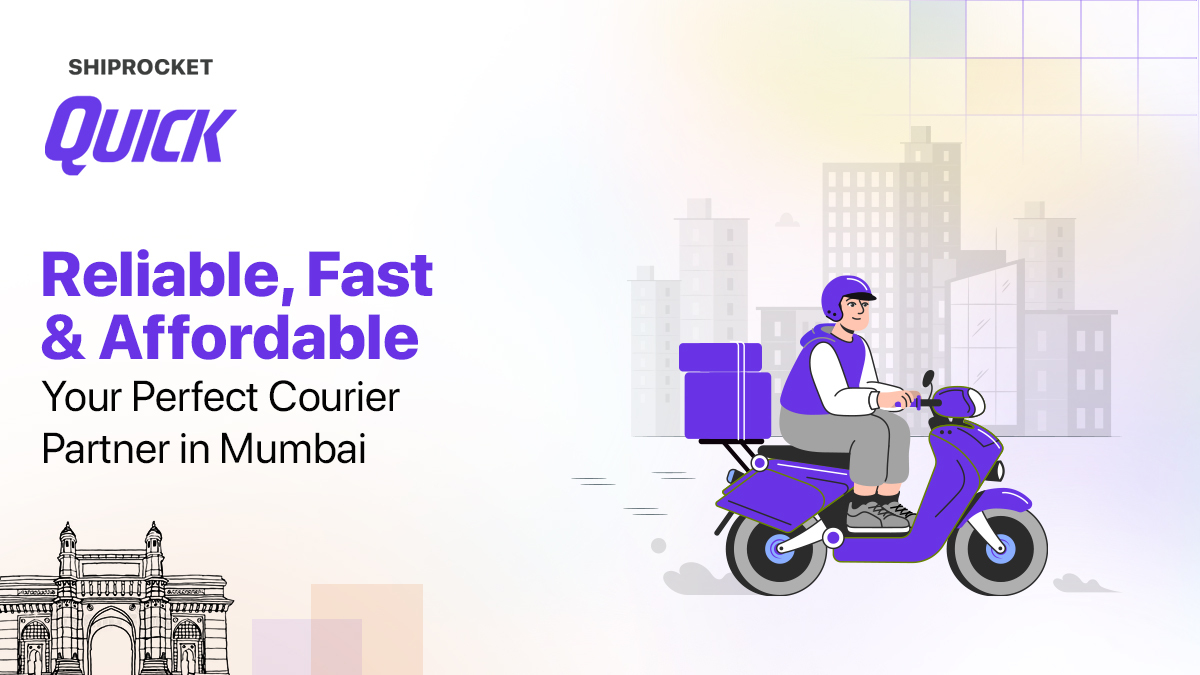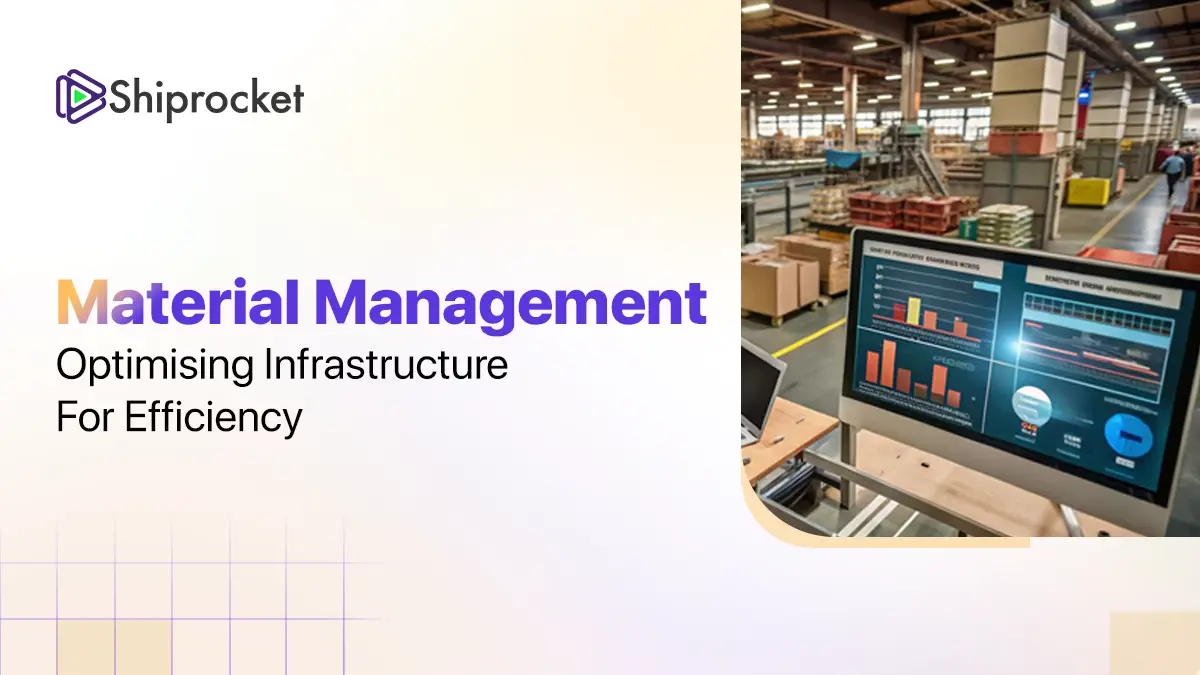All You Need To Know About On-Demand Warehousing
Running an eCommerce business is not easy! There are multiple aspects the business owner needs to take into consideration while running the business. Order fulfillment is one aspect that affects a significant part of the company, starting from delivering products to inventory and warehouse management.
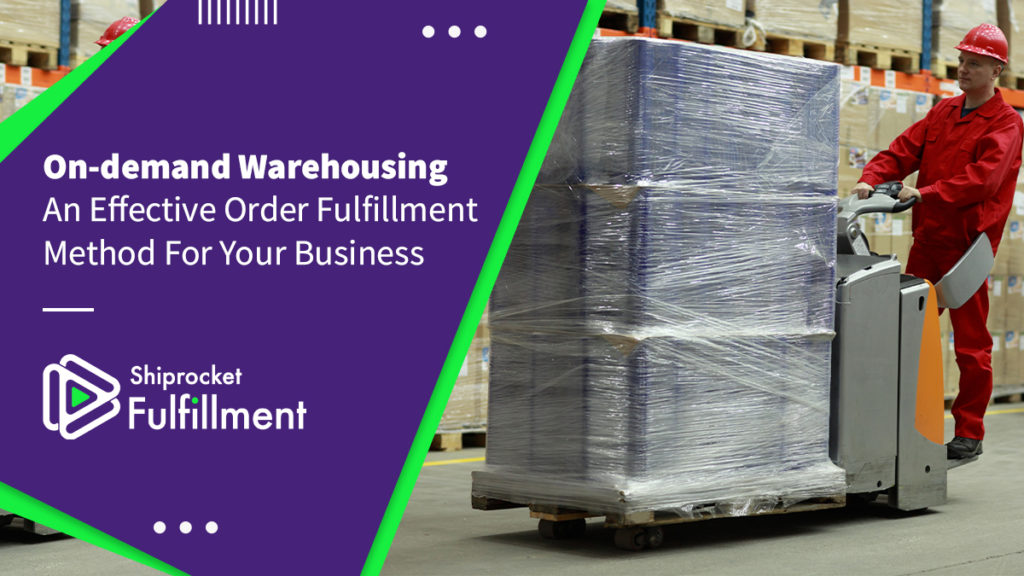
There are multiple order fulfillment methods that eCommerce businesses can choose to fulfill their orders, as per their business requirements. As order fulfillment directly impacts your customers’ satisfaction, critical attention must be paid to doing it most efficiently. So, what are the most common order fulfillment methods that we know of-
Outsourcing to a 3PL
This is when eCommerce businesses outsource their fulfillment needs to an experienced 3PL like Shiprocket Fulfillment, that will take care of their storage, inventory management, packaging, and shipping products to the customers. A 3PL, in short, is an all-in-one solution for businesses.
Read more about 3PL here.
Self-fulfillment
This is when eCommerce businesses that are slightly smaller in size in terms of processing orders choose to fulfill their orders. They take care of inventory storage, management, shipping, etc.
Droshipping
This is when the eCommerce business doesn’t need to worry about its inventory; instead, the manufacturer controls the entire supply chain. In the dropshipping process, orders are shipped to the end customer directly from the manufacturer/factory.
Next comes on-demand warehousing .
On-demand warehousing – This is a relatively newer concept for beginners; therefore, let us take a more in-depth look at the idea of on-demand warehousing and how it can be relevant for your eCommerce business-
What is On-demand Warehousing
On-demand warehousing is an online platform that offers sellers to store their inventory and fulfill orders temporarily with warehouses that have excess space with them. In simpler terms, In on-demand warehousing is outsourcing your order fulfillment to a company that doesn’t perform fulfillment services itself but outsources it to others.
Here’s an example to help you understand the concept of on-demand warehousing better-
Let’s say you run an eCommerce store that processes nearly 5-10 orders per day. Given that the order volume isn’t that high, you were fulfilling your garage (self-fulfillment).
Suddenly, during the festive season, you witnessed a surge in order volume and have ramped up your marketing efforts to help drive further business. But you don’t want to spend a lot of your money on warehouse investment, and instead, you could choose to store your inventory temporarily with an on-demand warehousing platform. With an on-demand warehousing platform, you can choose to keep your items during the peak season and get back to self-fulfillment once you deem fit.
Why is On-demand Warehousing Getting Popular?
On-demand warehousing is now getting more and more popular, owing to the competition from Amazon’s FBA. Let us take a look at what is making on-demand warehousing a famous concept these days-
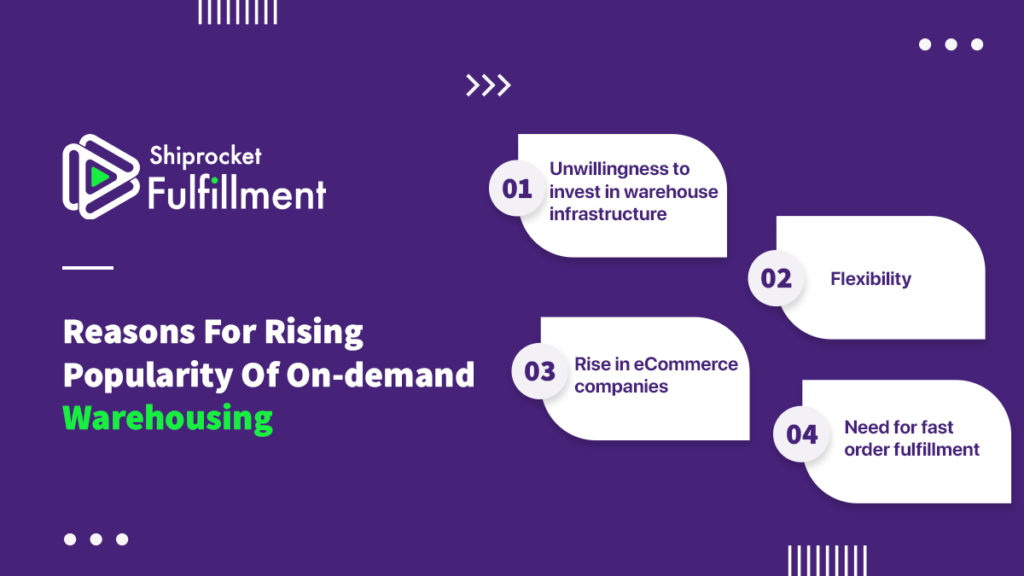
Unwillingness to Invest in Additional Warehouse Space
Warehouse space is a costly capital investment, which most eCommerce brands and sellers want to avoid. Therefore, on-demand warehousing is the best option for such businesses, as they can temporarily store their inventory on a contractual basis, with no worries about investing any of their money in a warehouse space.
Flexibility
On-demand warehousing offers flexibility to sellers, as there are no long-term commitments involved. eCommerce sellers deal with seasonal inventory leverage on-demand warehousing the most, as they need a one-time warehouse space to store their inventory. Why rent out a warehouse for just a few days, when you can get the job done half the money with on-demand warehousing?
If you have a bunch of excess inventory that would be too expensive to store with a regular 3PL, on-demand warehousing can be the best solution for you.

The rise in the Number of eCommerce Companies
eCommerce has proved itself essential even after the outbreak of the deadly coronavirus in India. With the increasing penetration of the internet in the country, eCommerce is on the rise in India, with companies opening up almost every day. With the increase in eCommerce, success comes the need for more warehousing space. This is one of the primary reasons for the growth of on-demand warehousing in India.
Need for Faster Order Fulfillment
In the 21st century, people expect same-day and next-day delivery. On-demand warehousing can provide the same-day delivery options, in turn enhancing customer satisfaction for businesses. eCommerce businesses can search for an on-demand warehousing platform located within a few km radii from the customer’s location.
On-demand warehousing can also be extremely beneficial if you want to use a city hub that you won’t typically find elsewhere.
Who Uses On-demand Warehousing
Businesses ranging from those dealing with consumer goods, industrial manufacturing to the hospitality industry can benefit from on-demand warehousing. Both large and small companies seeking to upgrade their supply chains can use this model.
Enterprise Business
Enterprise businesses can use on-demand warehousing to complement their already existing order fulfillment infrastructure. It is an excellent option for rolling out new initiatives, managing potential supply-chain disruptions with peak seasons and tariffs, and piloting new programs or product/service promotions.
Established Brands
Online born and bred companies can also leverage on-demand warehousing for various purposes. Most online-dependent companies focus on acquiring customers and developing their business before the supply logistics, enabling them to work them to grow worrying about finding physical warehouses.
The Difference Between Traditional 3PL and On-Demand Warehouse Providers
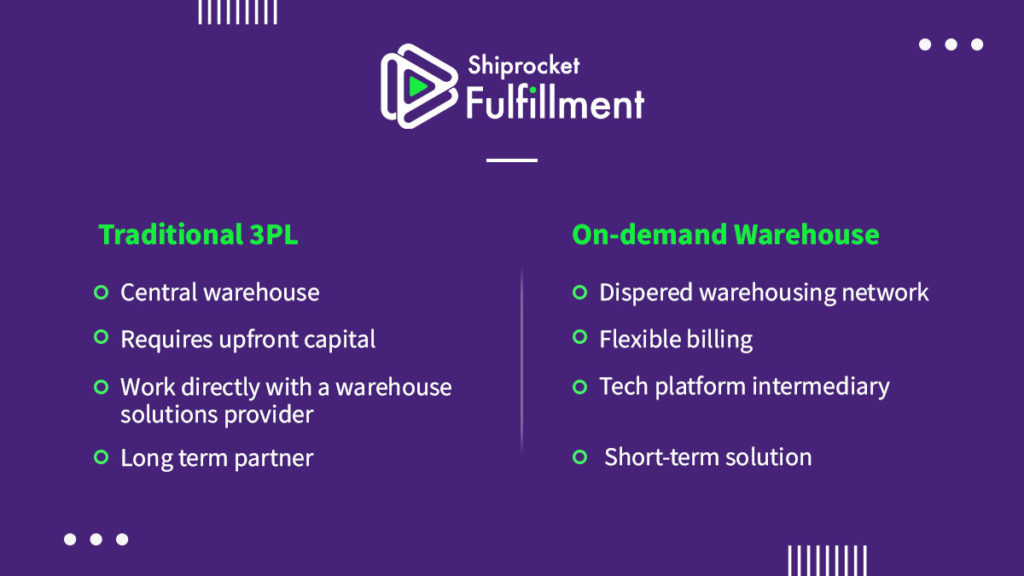
There are critical differences between traditional and on-demand warehousing solutions you’ll want to understand before deciding your business.
- Central vs. dispersed warehouse network – Traditional third-party logistics providers supply central warehousing solutions in a few select locations. On-demand warehouses operate a series of dispersed warehouses and shipping fulfillment centers.
- Upfront costs vs. flexible billing – Traditional warehousing solutions generally require significant upfront capital and long term contracts, while on-demand warehouse solutions offer flexible billing and deals.
- Working directly with a warehouse provider vs. a tech platform intermediary – With a 3PL, you now have a warehouse solutions provider. In contrast, an on-demand warehouse provider is a technology platform that allows you to connect to short-term available warehouse space.
- Long Terms Partner vs. short term solution – A 3PL with proven logistics and fulfillment expertise offers stability and a long term partner willing to understand and grow with your unique business. An on demand-warehouse offers short term flexibility, but there’s no guarantee of consistent service quality across the network.
Final Say
Every eCommerce business is unique and needs different warehouse solutions to deliver their products to customers efficiently. On-demand warehousing providers offer new, flexible solutions worth considering for specific cases, while traditional 3PLs provide more stability and a long term partnership. After reading the article, it is now your decision to choose from an on-demand warehousing partner and a 3PL, based on your business needs!



